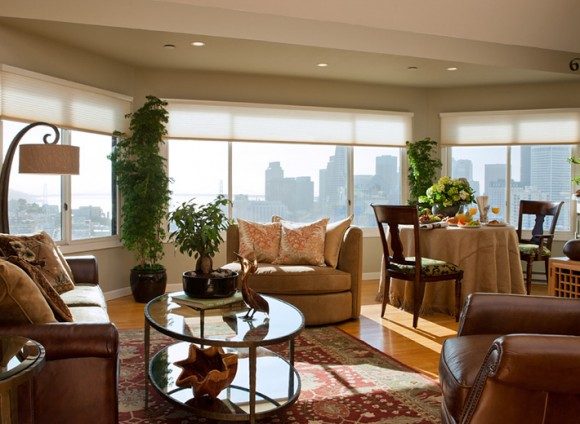Wellness Design is Trending

In advance of Earth Day on April 22, and also because we’ve been dealing with a global pandemic that’s keeping us indoors more than usual, we’re talking about wellness design for interiors.
Wellness is much more than just going to a spa or doing yoga, it’s a movement that values a whole spectrum of healthy lifestyle choices, from exercise, fitness, and nutrition to living in balance, developing healthy social connections, emphasizing relaxation and joyful experiences, and valuing mindfulness and slower living. It also means creating and living in spaces that nourish our mind and body. Here are a few concepts to get started.
Biophilic Design

Biophilia means that people have an innate tendency to seek connections with nature and life, an inherent human connection to the natural world. Biophilic design harnesses this affinity to create more natural environments in which to live, work, and play. Designs that connect us to nature are proven by research to inspire, boost our productivity and contribute to better overall wellbeing.

In my design work, I frequently bring the outdoors in and create indoor environments that reference nature. A few years ago I donated my services to redesign this chemotherapy treatment room at Marin Cancer Care hospital.

This mid-century living room is made more inviting by a driftwood sculptural wall feature with air plants and moss, softening the hard edges of modern design styles.
Color Design

Color has a strong influence on the mood of a room and how it makes you feel. Lighter colors are considered to be airy and make rooms feel larger and brighter by bouncing light around. Darker colors are more formal, feeling intimate. Neutrals of black, gray, white and brown can be used on their own, or to establish a balance when combined with active or passive colors.

Active colors like orange, yellow and pink are bright and excite the mind, boosting creativity, while red is known to stimulate the appetite. Passive colors like blue and green are cool, calming the mind and aiding mental focus and relaxation. Colors should be customized to your own personal tastes.

Make sure your colors also coordinate with each other, so that you aren’t disturbed by moving between spaces, and are pleased when viewing spaces in the same line of sight together. A good designer will take all these things into consideration when creating your home’s interiors.
Lighting Design

Light is one of the most important elements in home design. Living spaces designed around natural light sources, smart lighting systems to better match the natural rhythms of our bodies, and artificial lighting that mimics daylight are all ways to address our need for appropriate interior light.

Natural daylight provides a tremendous health and wellness boost, improving productivity, alertness, and even mood. We need vitamin D from natural daylight to absorb calcium and other minerals in food. Daylight inhibits the production of melatonin, which ensures that we get tired when it’s dark outside, while cortisol does the opposite, making us alert and focused, triggered by daylight. Getting the balance right is key to enjoying your home.
Kimball Starr Interior Design can create a healthy and beautiful home environment just for you – Contact her today for a consultation!













